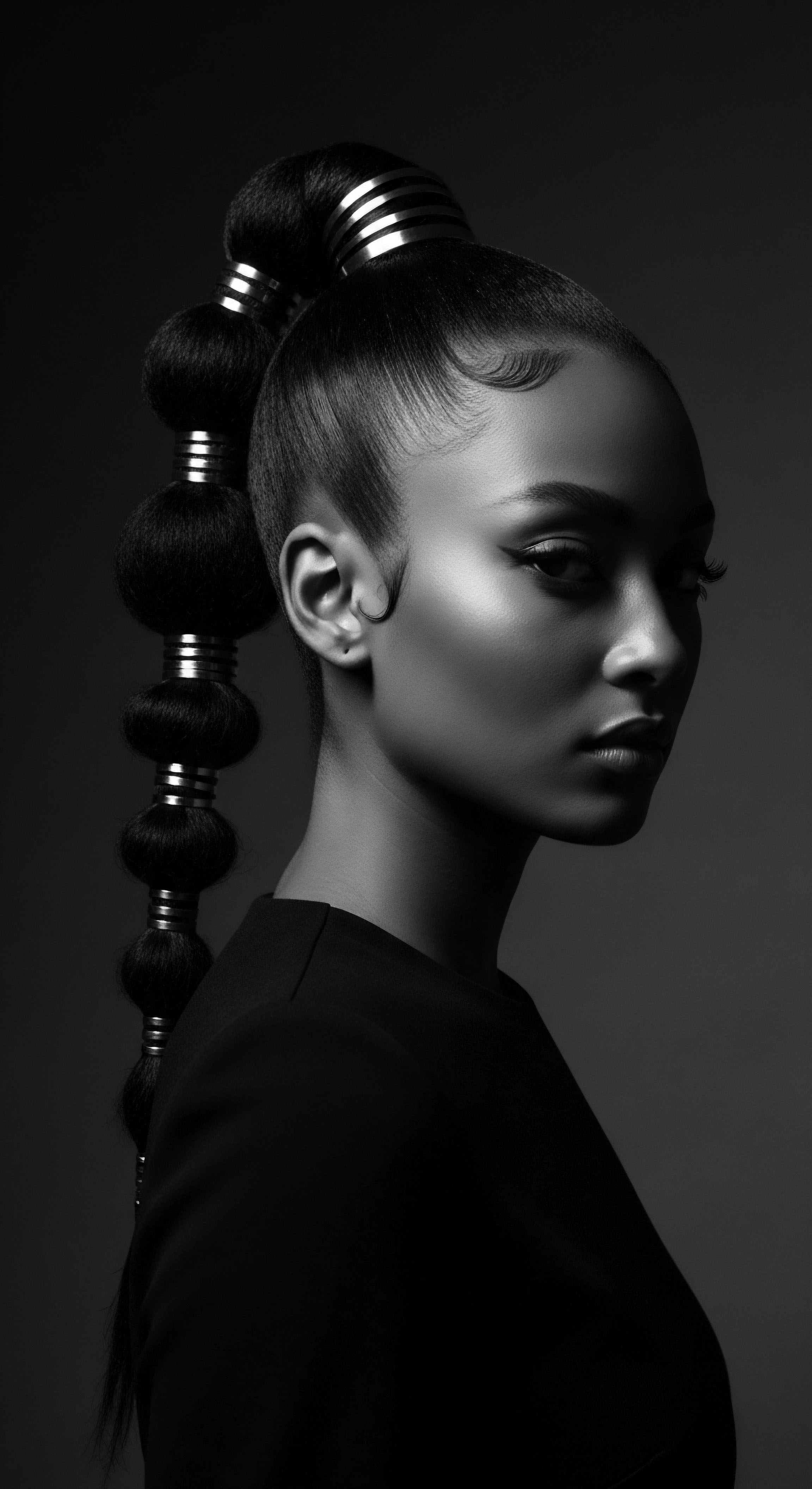
Fundamentals
The concept of Antiquity, when viewed through the compassionate lens of textured hair heritage, extends far beyond a simple chronological delineation of ancient times. It is an exploration of the foundational wisdom, elemental discoveries, and enduring practices that laid the groundwork for how Black and mixed-race communities have honored, sustained, and expressed themselves through their hair across millennia. Antiquity, in this context, signifies a deep wellspring of knowledge, a time when humanity’s connection to the earth and its offerings informed every aspect of life, including the intricate care of natural hair. It represents the genesis of what we now recognize as traditional hair regimens, a testament to the ingenuity and profound understanding our ancestors held concerning the biological capabilities and aesthetic possibilities of coils, kinks, and waves.
For individuals new to this profound subject, grasping the meaning of Antiquity involves acknowledging that long before the advent of modern cosmetic science, there existed a sophisticated, culturally rooted approach to hair. This historical period, broadly encompassing civilizations from ancient Egypt to diverse West African kingdoms and early Nubian societies, provides a blueprint for contemporary practices. It underscores the intrinsic value placed on hair as a living fiber, a conduit for spiritual energy, and a canvas for societal communication. The earliest recorded evidence reveals that hair care was never a trivial pursuit; it was interwoven with spiritual beliefs, social status, and communal bonds.
The very fibers of hair—its unique structure, its varying densities, and its inherent need for moisture—were understood, observed, and respected, leading to the development of tailored care methods using available natural resources. This period’s legacy is not merely one of survival; it is a story of thoughtful cultivation and reverence for hair as a sacred extension of self and community.
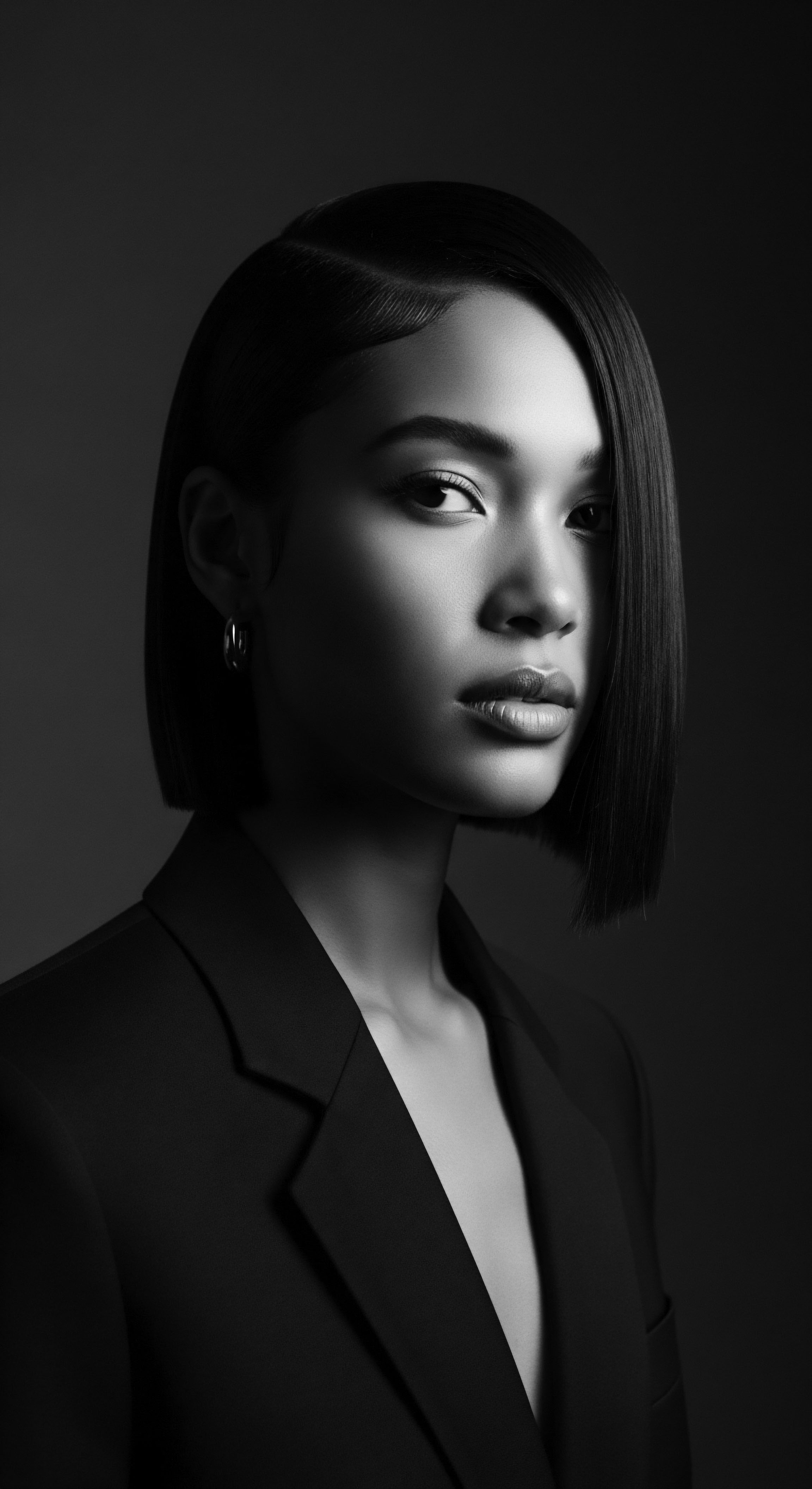
Echoes from the Source ❉ Early Hair Cultivation
Consider the daily routines within ancient African households, where the practice of tending to hair was a communal ritual, often passed down through generations. These were moments of shared laughter, quiet storytelling, and gentle instruction, binding individuals through the tender touch of care. The elemental practices of cleansing, moisturizing, and styling were not detached technical steps; they formed part of a holistic philosophy, recognizing the hair’s intimate connection to a person’s overall well-being and spiritual alignment. For instance, archaeological discoveries and historical accounts from ancient Egypt reveal a sophisticated understanding of hair adornment and maintenance.
Both men and women, particularly among the elite, wore elaborate wigs crafted from human hair, wool, or plant fibers, often intricately braided and embellished with precious metals and beads. These were not just for show; they communicated social standing, age, and religious piety. The deep-seated heritage of hair, therefore, begins with these ancient civilizations, where the elemental biology of hair met with the art of its adornment and preservation.
Furthermore, early African communities, long before the colonial gaze disrupted indigenous systems, developed a wealth of solutions for hair health from their immediate environments. The identification of various plant extracts, butters, and oils points to an intuitive ethnobotanical wisdom that continues to inform natural hair care today. The practice of using substances like shea butter, derived from the Vitellaria paradoxa tree, traces its lineage back to the reign of Queen Cleopatra in ancient Egypt, revered for its moisturizing and protective properties for both skin and hair.
This butter, rich in vitamins, offered UV protection and promoted a healthy, resilient appearance. Similarly, ancient Egyptian priests often shaved their heads, not out of disdain for hair, but to maintain ritual purity for their sacred duties, while still valuing wigs and elaborate headpieces as symbols of status and connection to the divine.
- Cleansing Rituals ❉ Early African shampoos were often multi-purpose bars of soap, while some communities employed clays, like Rhassoul clay from Morocco, to gently purify the scalp and strands without stripping natural oils.
- Moisturizing Agents ❉ Natural oils and butters, including shea butter, marula oil, and various plant-based concoctions, were vital for maintaining hair’s softness and preventing dryness in harsh climates.
- Protective Styles ❉ Braids, twists, and locs, often adorned with cowrie shells and beads, were not only aesthetic expressions but also served to safeguard the hair from breakage and retain length.

Intermediate
Transitioning to an intermediate understanding of Antiquity compels us to consider the profound societal fabric within which hair practices were woven. It is a time when hair was a dynamic language, communicating a person’s life story, their lineage, their place within the collective, and their very spiritual alignment. The meaning of Antiquity here broadens beyond a mere chronological period; it becomes a vibrant repository of cultural wisdom, where every curl, every braid, and every strand held a specific sense. The intricate artistry of ancient African hairstyles was not simply a display of aesthetic skill; it was a sophisticated system of non-verbal communication, a living archive inscribed upon the head.
The significance embedded within ancient African hair traditions is particularly striking. In pre-colonial African societies, hairstyles conveyed a wealth of information ❉ age, marital status, social rank, tribal affiliation, and even spiritual beliefs. For instance, a young woman’s braids might differ markedly from those of an elder, or a married woman’s style might distinguish her from an unmarried one. These visual cues reinforced community cohesion and facilitated social interaction, providing a rich, immediate understanding of an individual’s standing within their world.
Hairdressers, therefore, held esteemed positions within these communities, their hands not only sculpting hair but also shaping identity and preserving cultural narratives. Braiding sessions, lasting hours or even days, became cherished communal gatherings—spaces for shared confidences, the transmission of generational knowledge, and the strengthening of familial bonds.
Hair, in ancient African societies, was a profound visual language, a living narrative inscribed upon the head, speaking volumes about identity and community.
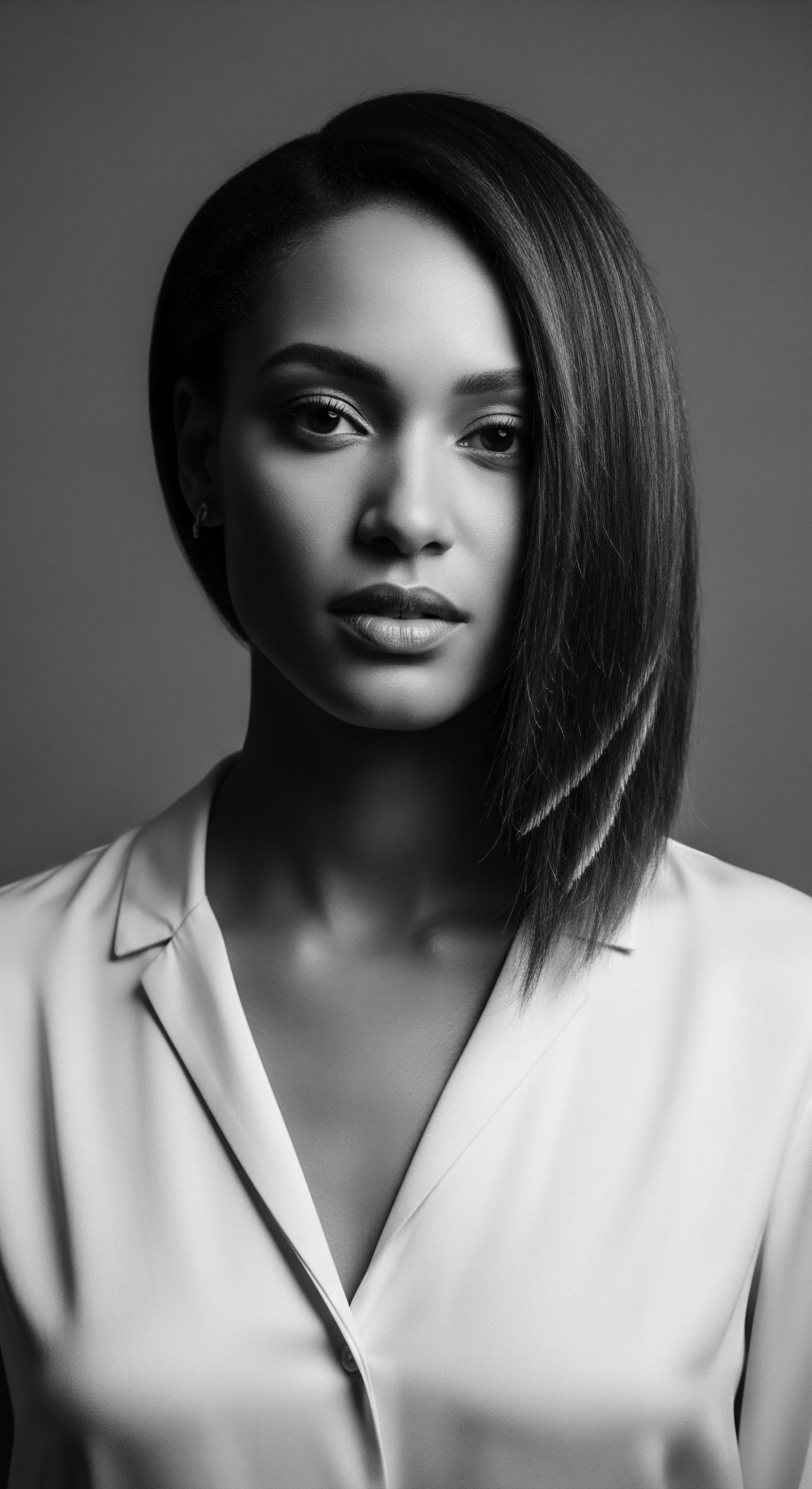
The Tender Thread ❉ Hair as a Social and Spiritual Medium
Across various African civilizations, hair was regarded as a sacred aspect of the body, often considered the entry point for spiritual energy. This belief meant that hair was not merely a personal attribute; it served as a communal asset, linking the individual to their ancestors and the spiritual realm. In East Africa, among the Maasai people, the cyclical practice of shaving and regrowing hair was central to rites of passage, symbolizing new life stages and a reaffirmation of spiritual connection. This demonstrates a deep reverence for hair as a dynamic entity, capable of expressing profound personal and collective transitions.
Similarly, the Yoruba people of Nigeria crafted elaborate hairstyles with deep spiritual significance, often performed by skilled braiders who were highly respected within society. Styles like “Irun Kiko,” a form of thread-wrapping, not only served as striking visual statements but also carried meanings connected to femininity, marriage, and rites of passage into adulthood.
The purposeful manipulation of hair, from simple parting to complex interwoven patterns, served as a means of protection—both physical and spiritual. Certain styles were believed to guard against malevolent forces, often adorned with amulets or charms. This practical and spiritual intersection highlights a comprehensive understanding of well-being that integrated the physical body with the spiritual dimension. The historical accounts and archaeological evidence, particularly from ancient Egyptian temples and tombs, offer detailed insights into these practices, revealing the meticulous attention paid to hair for its protective and symbolic powers.
Let us consider the distinct regional variations in ancient hair practices, showcasing the ingenuity and adaptation of diverse communities:
- West African Braiding Traditions ❉ Tribes such as the Yoruba, Wolof, and Fulani developed exceptionally intricate braiding patterns. These designs were unique to each tribe, signaling personal identity, social standing, and community affiliations. The significance could extend to marital status or readiness for specific life ceremonies.
- Central and Southern African Adornments ❉ Communities in these regions, including the Himba tribe in Namibia, used specific hair adornments like red ochre paste to coat their locs. This symbolized a direct connection to the earth and their ancestral heritage. Archaeological finds from sites like Kerma in Sudan reveal intricate beadwork integrated into hairstyles, indicating a long history of hair as a medium for artistic expression.
- Ancient Egyptian Wig Craftsmanship ❉ Beyond natural styles, ancient Egyptians created elaborate wigs. These were meticulously constructed and often dyed with henna, then adorned with beads, ribbons, or jewelry. They served as clear markers of social class, wealth, and religious devotion, demonstrating a sophisticated understanding of hair as a form of social currency.
| Ancient Ingredient/Practice Shea Butter (Vitellaria paradoxa) |
| Traditional Application & Significance Used as a nourishing moisturizer, skin protector, and base for hair treatments. Traced to ancient Egyptian royalty. |
| Contemporary Parallel/Benefit A staple in natural hair products globally for its emollient properties and ability to seal moisture within textured hair strands. |
| Ancient Ingredient/Practice Rhassoul Clay (Morocco) |
| Traditional Application & Significance Employed as a gentle cleanser and detoxifier for hair and scalp, removing impurities without harsh stripping. |
| Contemporary Parallel/Benefit Valued in modern natural hair routines for its cleansing ability, leaving hair soft and defined without disrupting natural curl patterns. |
| Ancient Ingredient/Practice African Hair Threading ("Irun Kiko" by Yoruba) |
| Traditional Application & Significance Protective styling using flexible threads to wrap hair, stretch curls, and retain length. Often decorated with ornaments. |
| Contemporary Parallel/Benefit Re-emerging as a protective styling technique for stretching hair, reducing heat damage, and promoting length retention in textured hair. |
| Ancient Ingredient/Practice Henna (Lawsonia inermis) |
| Traditional Application & Significance Used as a dye for hair, palms, and nails. Offered reddish to blonde hues and provided conditioning benefits. |
| Contemporary Parallel/Benefit Popular in natural hair care for coloring, strengthening hair, and improving strand elasticity, offering an alternative to chemical dyes. |
| Ancient Ingredient/Practice These ancient practices and ingredients continue to provide foundational knowledge for sustaining textured hair, bridging ancestral wisdom with modern understanding. |
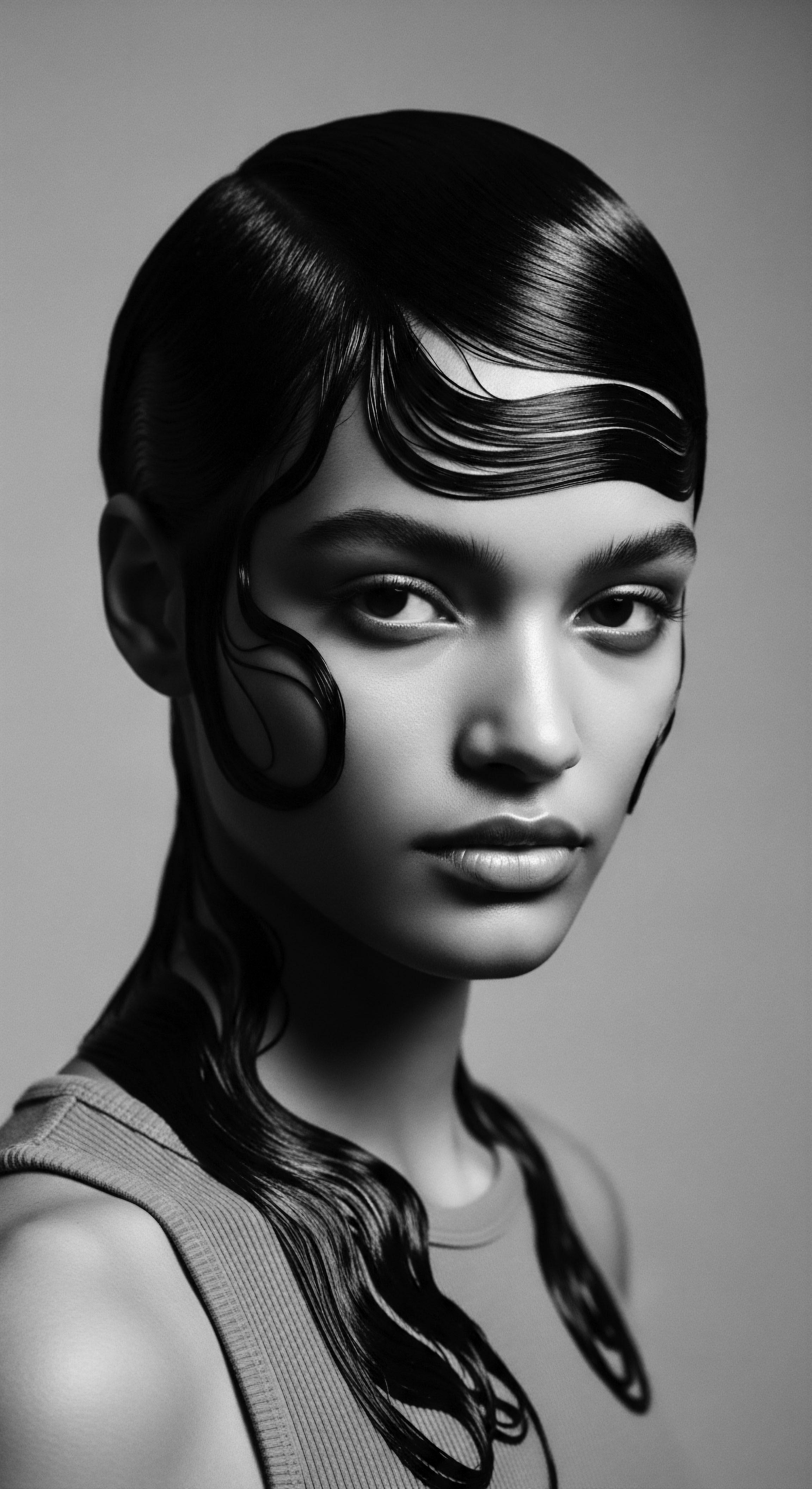
Academic
The academic meaning of Antiquity, particularly concerning textured hair heritage, demands a rigorous examination of its complex layers, moving beyond anecdotal accounts to a deep understanding of the underlying principles and systemic implications. It is an exploration that considers the elemental biology of hair through the lens of ancient observations, the societal structures that shaped its cultivation, and the enduring resilience of these practices against historical adversities. Antiquity, in this advanced discourse, represents a period of profound indigenous scientific inquiry and cultural construction, where the relationship between human beings and their physical expression, through hair, was deeply meaningful and meticulously ordered.
At its core, the study of Antiquity for textured hair involves dissecting how diverse African civilizations, without the benefit of contemporary microscopy or molecular analysis, developed sophisticated hair care systems that intuitively aligned with the unique structural properties of Afro-textured hair. The tight coils and kinks of this hair type, characterized by numerous bends and a flattened elliptical cross-section, are inherently more susceptible to dryness and breakage compared to straighter hair textures. Ancient practitioners observed this reality and innovated solutions. They understood the necessity of moisture retention, the benefits of protective styling, and the efficacy of natural emollients.
This ancestral knowledge, transmitted orally and through practice across generations, often finds validation in modern trichological and ethnobotanical studies. For instance, the use of thick, emollient plant butters and oils was a direct response to the hair’s propensity for moisture loss, effectively creating a barrier against environmental dehydration. The consistent practice of braiding and coiling was a strategic choice to minimize manipulation and prevent tangling, thereby reducing mechanical stress on the fragile hair shaft.

The Unbound Helix ❉ Ancient Science and Enduring Resilience
A compelling example that illuminates the depth of this ancient knowledge is the consistent, generational practice of using Chébé powder by women of the Bassara/Baggara Arab tribe in Chad. This historical tradition, dating back centuries, involves drying and grinding the seeds of the Chébé plant into a fine powder, which is then mixed with water or moisturizing substances like shea butter to form a paste. This paste is applied to the hair, often braided, to aid length retention. While contemporary scientific understanding of the exact mechanism is still developing, the traditional application suggests an intuitive grasp of how to strengthen hair strands and reduce breakage, thereby promoting the appearance of longer hair.
Women apply this mixture, then braid their hair, which remains in these protective styles for extended periods—sometimes up to three months—before redoing. This ritual underscores a practical approach to hair care focused on preserving the hair’s integrity in its natural coiled state, rather than altering its inherent texture. This practice demonstrates a tangible, historically evidenced application of ancient wisdom directly influencing hair health and appearance, a continuity of care from Antiquity to the present day. It represents a living legacy, deeply rooted in specific cultural landscapes and ancestral practices, rather than a mere historical curiosity.
Moreover, archaeological evidence from ancient Nubia further underscores the sophistication of ancient hair and body practices. While textiles like linen gained prominence in Egyptian burial contexts around 3000 BCE, Nubian populations, in contrast, consistently exploited animal skins, often with hair still attached, for grave linings and body coverings throughout various periods. This indicates differing material cultures and potentially different approaches to hair as a cultural marker or an aspect of the deceased. Ancient Nubians also developed techniques to enhance skin and hair, utilizing a wide array of personal accessories and cosmetics.
Analyses of materials like kohl suggest their use as a cultural marker within a broader Nile Valley setting, hinting at a nuanced interplay of beautification, status, and identity expressed through body and hair adornment. The presence of henna, used for hair coloring from red to blonde and known to straighten hair follicles, in both Nubian and ancient Egyptian contexts, indicates a shared yet distinct heritage of hair treatment and appearance alteration.
The ancient use of Chébé powder by Chadian women exemplifies a sophisticated, long-standing ancestral wisdom for length retention, connecting past practices to present-day hair resilience.
The profound disruption of the transatlantic slave trade profoundly impacted the continuity of these ancient practices. Enslaved Africans were often stripped of their cultural identity, including their elaborate hairstyles, through forced shaving. Deprived of traditional herbal ointments, palm oil, and combs, they resorted to available substances like bacon grease, butter, or even kerosene to care for their hair. Yet, even in the face of such systematic dehumanization, the spirit of Antiquity—the knowledge, the ingenuity, and the cultural memory—persisted.
Enslaved individuals often re-embraced braiding as a means of silent communication, resilience, and a powerful assertion of identity. Cornrows, originating in Africa, were used to convey messages, conceal seeds for survival, or even create maps for escape. This act of covert cultural retention highlights the deep, enduring significance of hair as a vessel for heritage and resistance, carrying the wisdom of Antiquity forward despite immense pressure. This historical journey of adaptation and perseverance underscores the core meaning of Antiquity ❉ not merely a bygone era, but a foundational period whose innovations and cultural values continue to shape the textured hair experience today.
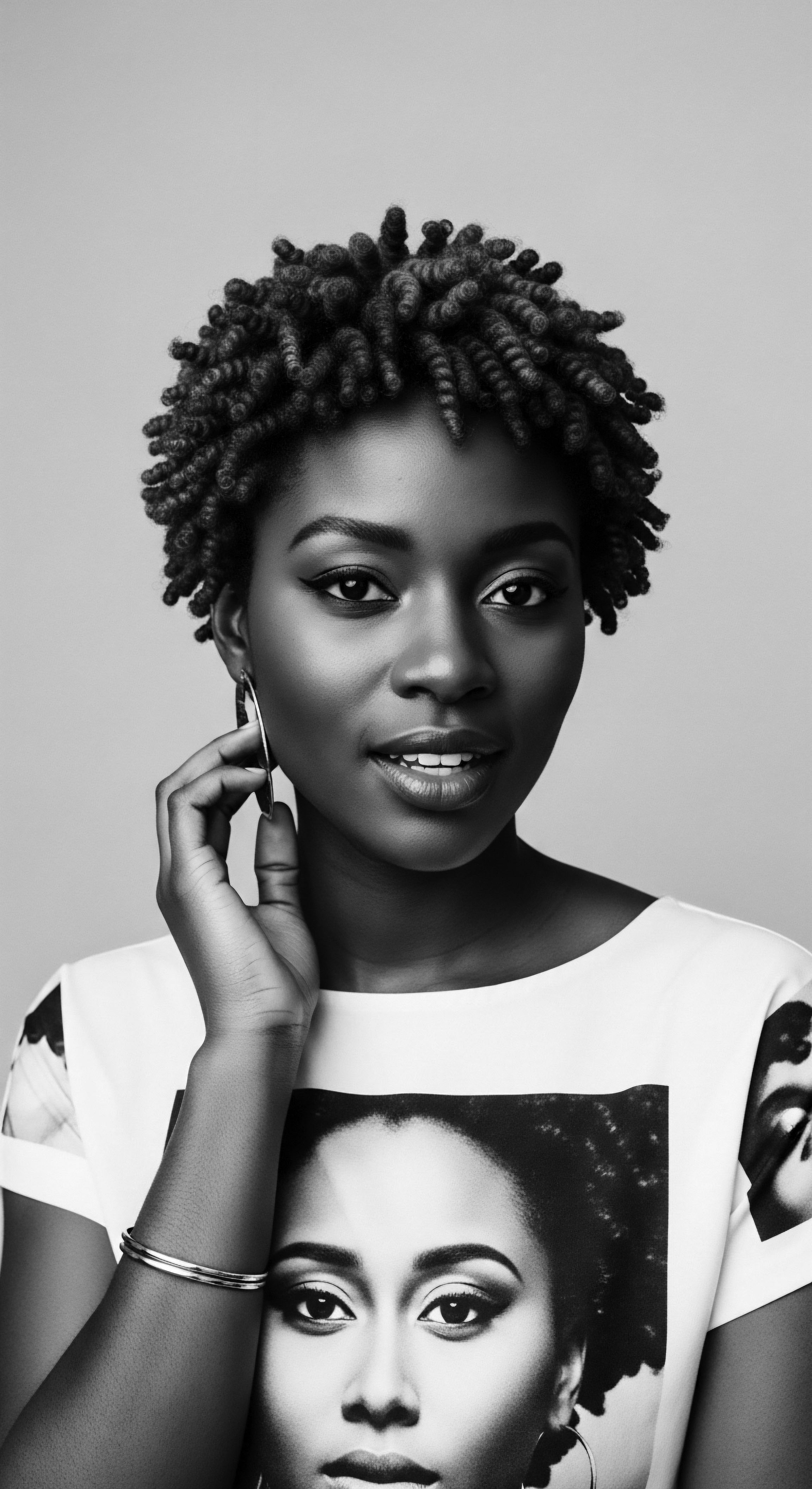
Ethnobotanical Wisdom and Hair Biology
The academic investigation into ancient hair care reveals an implicit understanding of hair biology. Textured hair’s unique structure, with its helical twists and often irregular cuticle, creates challenges such as increased friction between strands and greater vulnerability to breakage. Ancient practices, such as applying specific plant-based oils and butters, effectively addressed these structural realities. A 2024 ethnobotanical study on African plants in hair treatment identified 68 species traditionally used for alopecia, dandruff, lice, and tinea.
Remarkably, 30 of these species also have contemporary research associated with hair growth and general hair care, with studies exploring mechanisms like 5α-reductase inhibition or impacts on hair growth cycles. This overlap underscores the scientific validity inherent in long-standing traditional remedies, suggesting that ancestral knowledge was not merely ritualistic but functionally effective, developed through generations of empirical observation. The selection of plants like the rooibos tea from South Africa, known for its antimicrobial and antioxidant properties, or marula oil from Mozambique and South Africa, rich in oleic acid and antioxidants, points to a discerning selection of ingredients that offered tangible benefits for hair health and resilience.
The conceptual meaning of Antiquity here broadens to encompass this continuity—the unbroken chain of knowledge connecting past insights with present applications. It invites a holistic understanding of hair wellness, where ancient wisdom is not discarded in favor of modern discovery but rather integrated, allowing for a more complete picture of textured hair’s capabilities and its needs. The deep heritage of Black and mixed-race hair care, therefore, rests upon this bedrock of ancient understanding, a wisdom that respected hair as an organic entity deserving of specific, mindful cultivation.
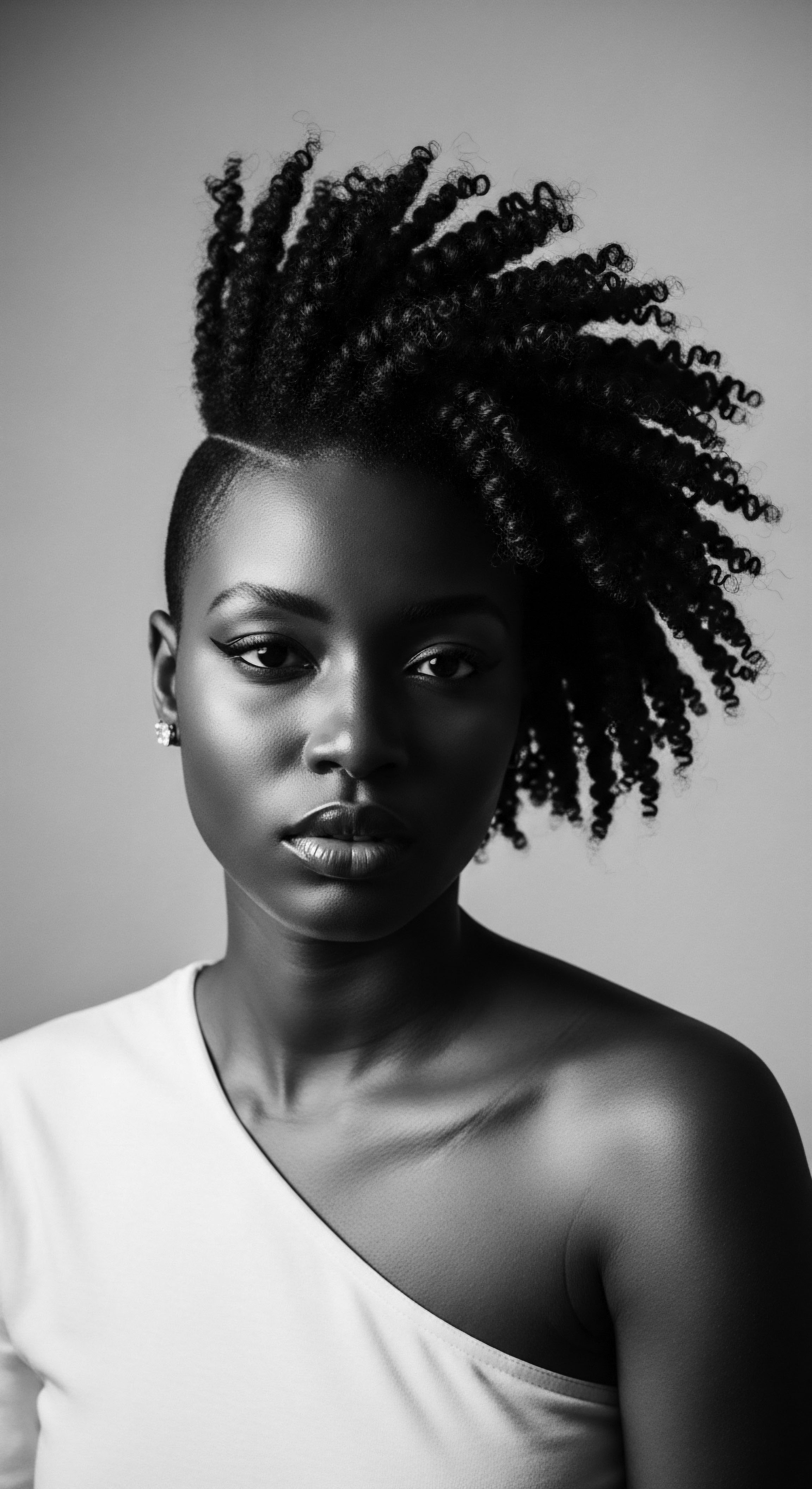
Reflection on the Heritage of Antiquity
The contemplation of Antiquity, particularly as it relates to textured hair heritage, serves as a poignant reminder that the story of our strands is an ancient one, inscribed with the wisdom of generations long passed. It is a narrative that speaks not of a distant, irrelevant past, but of a living, breathing legacy that continues to nourish and define us. The principles of care, community, and identity forged in those early eras remain vibrant currents within contemporary Black and mixed-race hair experiences. We find ourselves standing on the shoulders of those who first understood the nuances of our unique hair textures, those who meticulously developed methods for its preservation, and those who instilled in it a meaning far beyond mere aesthetics.
The journey from the elemental biology of ancient hair practices, through the tender threads of communal care, to the unbound helix of identity in modern times, reveals a remarkable continuity. This enduring connection underscores the profound resilience inherent in textured hair heritage. Despite centuries of systemic attempts to denigrate or erase indigenous hair practices, the knowledge persisted, carried forward through the quiet acts of mothers braiding their children’s hair, through shared secrets of plant remedies, and through the steadfast assertion of cultural pride. The echoes from the source reverberate powerfully today, informing our conscious choices to embrace natural hair, to seek out ancestral ingredients, and to find empowerment in styles that honor our roots.
Roothea, in its essence, represents this very journey—a meditation on textured hair that acknowledges its deep historical roots while celebrating its vibrant present and boundless future. The Antiquity is not a static museum piece; it is a dynamic wellspring of inspiration, reminding us that true hair wellness is holistic, connecting body, spirit, and ancestral lineage. When we engage with our hair, whether through the rhythm of a detangling session or the thoughtful application of a nourishing butter, we are not simply performing a modern routine; we are participating in an ancient dance, a timeless ritual of self-reverence and communal belonging. Our hair, therefore, is a crown of heritage, a testament to enduring wisdom, and a beacon guiding our path forward.

References
- Akanmori, E. (2015). Hair styling and the significance attached to this practice have played an important role in the African traditional culture.
- Byrd, A. D. & Tharps, L. L. (2002). Hair Story ❉ Untangling the Roots of Black Hair in America. St. Martin’s Press.
- Omotoso, A. (2018). The Significance of Hair in Ancient African Civilizations. Journal of Pan African Studies.
- Skinner, L. (2015). Flocks and herds ❉ animal skin and hide exploitation for the manufacture of Nubian leather. The Sudan Archaeological Research Society.
- Schildkrout, E. (2014). Body Art. Oxford University Press.
- Sharaibi, O. J. Oluwa, O. K. Omolokun, K. T. Ogbe, A. A. & Adebayo, O. A. (2024). Cosmetic Ethnobotany Used by Tribal Women in Epe Communities of Lagos State, Nigeria. Journal of Complementary Medicine & Alternative Healthcare, 12(4), 555845.
- Veldmeijer, A. J. & Skinner, L. (2019). Nubian Leather-making Specialists ❉ Evidence from Hierakonpolis, Egypt.
- Yvanez, E. Skinner, L. & Wozniak, M. (2023). Being comfortable in one’s skin in ancient Sudan. The Event – KU.
